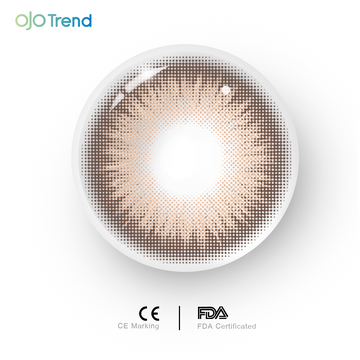When it comes to contact lenses, many people are curious about the materials used to create these vision-correcting devices. In this article, we will delve into the fascinating world of contact lens materials, exploring their composition, properties, and the innovative technologies behind them.

The Evolution of Contact Lens Materials
Over the years, contact lens materials have undergone significant advancements, leading to the development of various types of lenses to cater to different needs. From the early days of hard, rigid lenses to the modern soft, flexible ones, the evolution of contact lens materials has revolutionized the way people correct their vision.
Early contact lenses were made from glass, which posed comfort and safety issues. However, with the introduction of polymethyl methacrylate (PMMA) in the 1930s, hard contact lenses became more widely used. These lenses were durable and provided excellent vision correction but lacked the comfort of modern soft lenses.
The Materials Used in Modern Contact Lenses
Modern contact lenses are primarily made from hydrogels or silicone hydrogels. Hydrogel contact lenses are soft and flexible, allowing for enhanced comfort and oxygen permeability. These lenses are composed of water-absorbing polymers that can retain moisture, keeping the eyes hydrated throughout the day.
On the other hand, silicone hydrogel contact lenses combine the benefits of silicone and hydrogel materials, offering superior oxygen transmission to the cornea. This advanced material allows for extended wear and increased comfort, making them a popular choice for many contact lens wearers.
Exploring the Properties of Contact Lens Materials
When it comes to contact lens materials, several key properties are essential for ensuring optimal vision correction and comfort. These properties include oxygen permeability, water content, flexibility, and durability.
Oxygen permeability is crucial for maintaining the health of the cornea, as it allows oxygen to reach the eye's surface. Modern contact lens materials are designed to facilitate the passage of oxygen, reducing the risk of hypoxia and other complications associated with inadequate oxygen supply to the cornea.
The Future of Contact Lens Materials
As technology continues to advance, the future of contact lens materials holds exciting possibilities. Researchers are exploring innovative materials and manufacturing techniques to further improve the comfort, safety, and effectiveness of contact lenses.
One such development is the integration of smart materials into contact lenses, allowing for functions beyond vision correction. These smart lenses may have the capability to monitor glucose levels in tears, provide augmented reality experiences, or even deliver therapeutic drugs to the eye, opening up new frontiers in eye care and wearable technology.
In conclusion, the materials used in contact lenses have come a long way, evolving to meet the diverse needs of contact lens wearers. From the early days of rigid lenses to the advanced silicone hydrogels of today, contact lens materials continue to push the boundaries of innovation. With ongoing research and development, the future of contact lens materials is poised to bring about groundbreaking advancements in vision correction and eye care.
